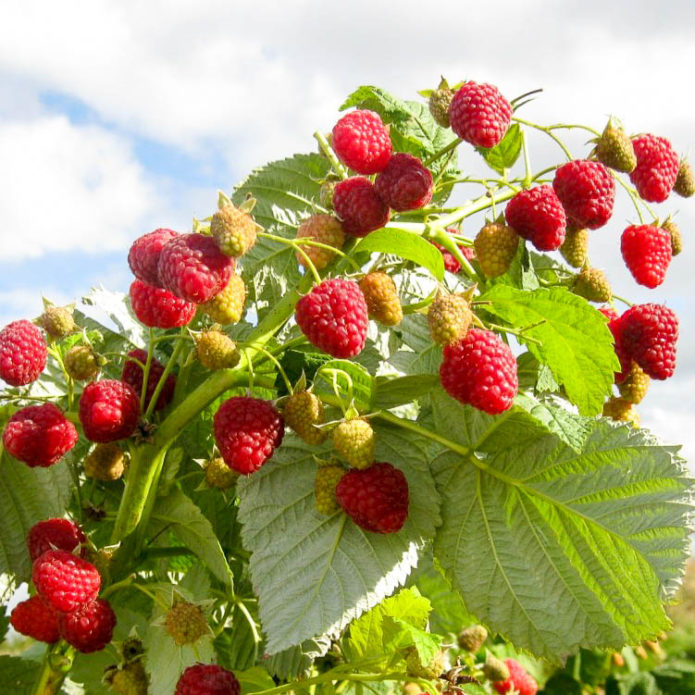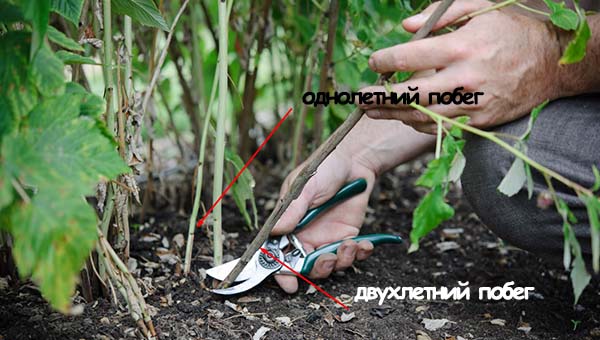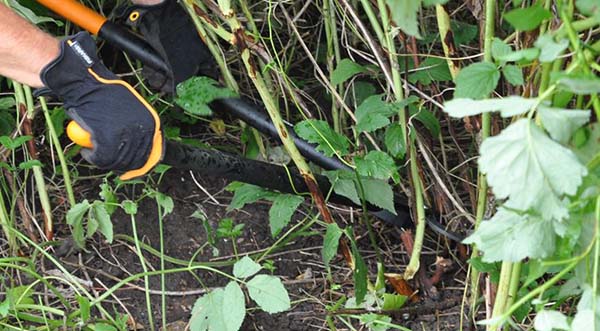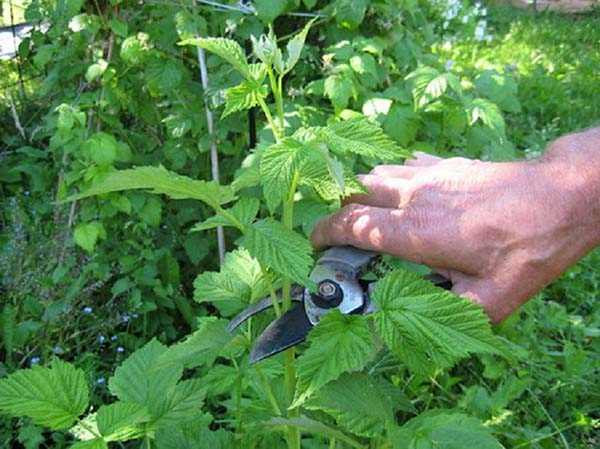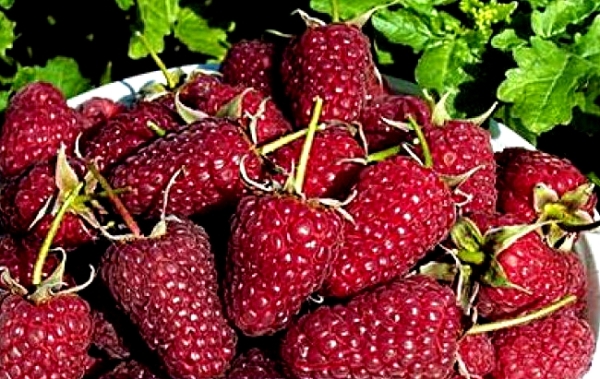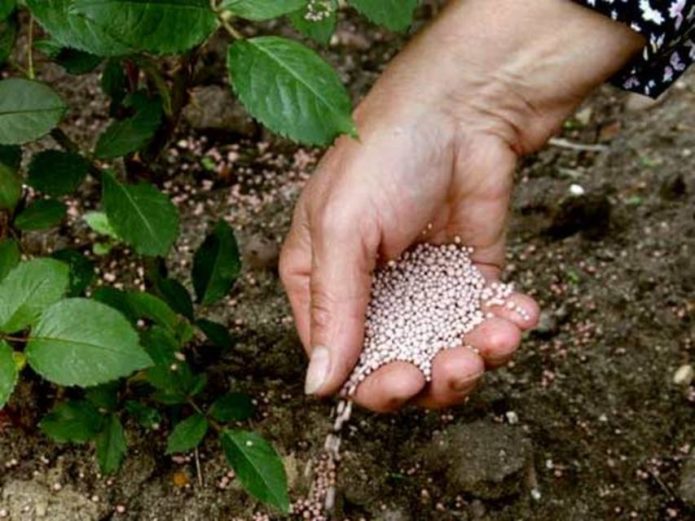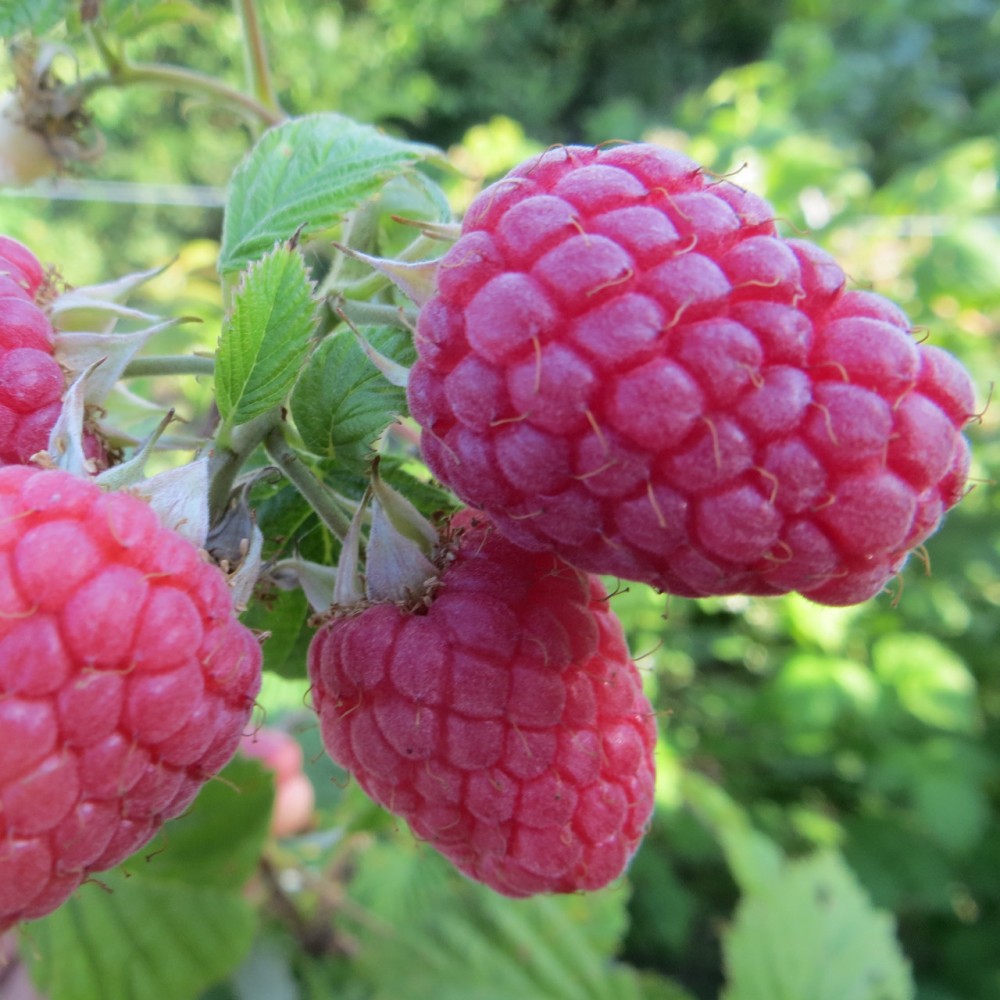If you want to get the maximum yield from raspberry bushes, then you cannot let its growth take its course. With regular collection of berries without the necessary and proper care, it will give only 25% of the possible. There is only one way out - to prepare it for winter. Knowing how to properly prune raspberries in the fall will help you save planting and ensure you harvest for the next year.
Content
When is the best time to prune raspberries
Raspberry bushes are pruned to achieve the following results:
- thinning bushes to get them a satisfactory amount of light and ventilation;
- increase in productivity;
- an increase in the resistance of bushes to frost;
- prevention of wintering of pests and fungal diseases in the shoots;
- external neatness of the bushes.
It is said that pruning raspberries is better in the fall than in the spring, as fungi and insects remain in the stems for the winter. You can also prune in the spring, because at this time you can see in what condition the bush is, which shoots must be removed to carry out sanitary pruning.
It is difficult to indicate the exact timing of autumn pruning, but the main signal for the start of the operation is the end of fruiting. Experts recommend pruning raspberries 3-4 weeks before the onset of frost (some gardeners argue that it is more expedient to prune remontant raspberries after the first frost). Consequently, the fall pruning time ranges from July to October.
Some gardeners also use summer pruning. It is performed for the accelerated formation of young stems and the growth of fertility. You can limit the growth of the raspberry bush by cutting out all the young stems around the main bush.
Alternative opinion
The most effective is the Sobolev method of pruning raspberries, named after the Russian founder of raspberry growing. It does not require special preparation, even a beginner can handle it.
According to this method, pruning dates fall into spring and autumn. The first pruning is carried out in May-June, when the shoots grow up to 1 meter. Later, it is impractical to carry out such an operation, since the stems do not have time to harden before frost. In the spring, the stems are cut 15 cm, and in the fall - to the base of the soil to prepare the raspberries for winter.
How to properly prune raspberry bushes in the fall
Effective pruning of raspberries in the fall covers these steps:
- It is necessary to cut dry, diseased and weak one-year-old shoots, as well as two-year ones that have borne fruit. Biennial shoots differ from annual shoots in bark color. It is dark brown, with one-year-old stems with light brown or greenish bark.
- The stems are cut along with the soil, the maximum height of the hemp can be 5 cm. If you leave high hemp 20-30 cm, then they can become infected with diseases and become a haven for pests.
- Old and dry shoots are simply broken off by hand, but it is more advisable to use a pruner.In order not to scratch your hands, you need to wear gloves, you can use a lopper with elongated handles.
- In case of damage to raspberry-stem gall midge, one-year-old shoots should be cut below the thickening (this is where the larvae of the pests are located). You can leave a stump of 40-60 cm, some cut them under the very base.
- If brown or black spots are visible on the shoots, this indicates a purple spot disease. The entire bush must be removed entirely. In a situation where spots are detected on one or two shoots, they can be cut at the root.
- You need to leave 6-10 healthy one-year shoots per bush, depending on its density.
- In annual stems, after fruiting, you can cut the tops by 20-30 cm. If you perform this manipulation, this will have a positive effect on wintering and productivity in the next year.
- All cut off shoots are put together and burned, as they can be affected by diseases and insects.
Video: Pruning raspberries in the fall
How to properly prune an old one (anti-aging pruning)
As a standard, raspberries are bred on one soil for about 10 years, 15-18 years is considered the maximum period, since the soil is already greatly depleted during this time, especially if it is not fertilized. The productivity of the bushes is significantly reduced not only because of the soil, but also because of the aging of the root. The influence of low temperatures, insects and diseases does not allow the buds to form normally, from which replacement shoots and offspring then appear.
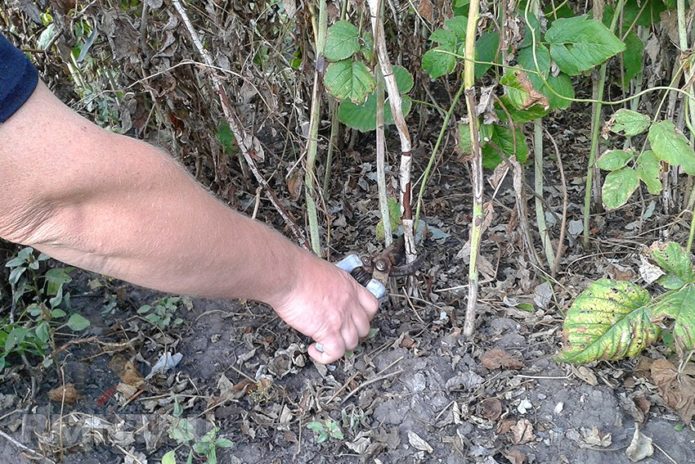
Without proper pruning, shoots may appear on the bush, which only create density, but nikah do not increase the amount of harvest
A gardener often wants to preserve his reliable variety, and not plant another, so the plantation needs to be rejuvenated.
This can be done like this:
- In September, it is necessary to bury a shovel near bad bushes to the full depth at a slight angle to the bush. This operation should be done around the entire bush;
- The main roots will be chopped, the bush can be pulled out by the root. It is necessary to watch that the root suckers are not damaged, because the essence of the method lies in their presence. You should not dig up all the bushes at the same time, it is better to do this in several visits annually, otherwise you will have to be left without berries at all;
- The pits from the bushes are covered with humus or compost and watered. In the spring, mineral fertilizer is applied to this place. Thus, the remaining bushes will bear berries, and new shoots with their roots will appear on the territory of the excavated ones. In a year, they will already have real replacement shoots.
So in a few years it is possible to rejuvenate your raspberry tree without ceasing to pick berries.
How to properly prune remontant raspberries
Not everyone realizes that there is a big difference between pruning traditional raspberries and remontant. In the first, berries are formed on two-year-old shoots, in remontant, they are formed on annual ones. This greatly affects the way the shoots are cut.
Any bush has about 8-10 main shoots, and from them one-year shoots already go. To have more of them, you need to pinch the growth point of any shoot, then it will give another 4-5 shoots. The resulting shoots will also need to be cut 10 cm to obtain a new tillering. Next year, shoots are cut out inside the bush so that it is not too thick, and the outer ones remain intact. As a result, out of 10 stems it is possible to get about 100, and all of them will bear fruit equally well.
Dutch gardeners prune raspberries in the fall, with excellent results: 30 kg of berries per bush throughout the season.Here we must not forget about top dressing and sufficient watering, since significant volumes of berries require a lot of mineral and other components, which are not enough in the soil.
Work in the raspberry tree in autumn is carried out only after the bushes reach two years of age. It can be practiced after harvesting the extreme harvest, when the cold comes and the leaves fall. All large shoots are pruned almost on a par with the soil, retain only small hemp 5-7 cm, young stems are cut out completely. If you do not prune raspberries in the autumn, then in the spring the bushes will grow stunted, and the variety may completely lose the ability to repair.
How to process and feed after
Autumn feeding is carried out after the raspberries are cut and the soil underneath has been dug up.
You can apply the following fertilizers:
- to place liquid bird droppings throughout the entire plantation;
- manure is brought in before digging to mix it with the soil. It is not only a fertilizer, but also an excellent way to cover rhizomes in winter. Consumption per 1 square meter - 4–6 kg. You cannot apply manure more often than 1 time in 3 years, it is better to alternate it with other fertilizers;
- compost is considered an excellent top dressing. It is obtained from plant waste (leaves of trees, tops, weeds, carrion), which over the summer are rotted;
- you can plant siderates: blue lupine, mustard, vetch-oats. They are planted in June and buried in the ground before winter. They rot and become an excellent fertilizer by spring;
- the addition of peat enriches the raspberry soil. This element should be combined with other dressings so as not to overdo it;
- mineral fertilizers (superphosphates, potassium salt) are applied to the soil at the rate of 40-60 g per one bush. Grooves are made between the rows at a distance of at least 30 cm from the bush and fertilizer is poured there.
Nitrogen fertilizers should not be applied, since they lead to strong growth, and raspberries, after pruning, must go into a dormant state. The thoughtless use of nitrogen fertilizers can lead to freezing of the plant in winter.
When thinking about how to fertilize raspberries in the fall, look at the appearance of the plants. He will indicate the need for certain fertilizers:
- poor growth and yellowing from the center of the leaf to the edge indicate a lack of magnesium;
- potassium deficiency leads to the appearance of brown edges on the leaves, the bushes do not winter well;
- if the leaves are yellowish with green veins, this indicates iron deficiency;
- when there is not enough phosphorus, the stems become thin;
- if the leaves on the bushes are small, yellowish, the raspberries lack nitrogen. Its excess is manifested in the excessive growth of leaves and stems, unripe berries fall off, and the yield decreases.
So, autumn pruning of raspberries is necessary for both traditional and remontant varieties. It allows you to properly prepare plants for winter, to ensure their cold resistance and resistance to diseases, harmful insects. If it is not produced, then next year the yield of the raspberry tree will be much lower.
